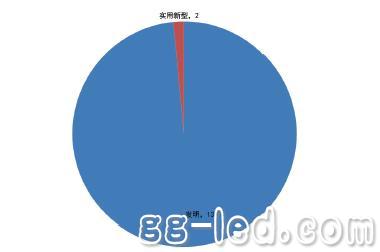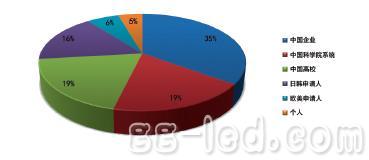[Text / "High-tech LED - Technology and Applications" September issue]
As is known, GaN-based LED chips in the world currently have three major substrate-related technical routes, namely, a technical solution for growing GaN/InGaN-based LED structures on sapphire, silicon carbide, and silicon substrates. The technology of using sapphire and silicon carbide as the substrate has successfully realized commercial production, but the core technologies of these two schemes are basically monopolized by Japanese and American manufacturers, and have established strict patent barriers. Furthermore, the insulation of the sapphire substrate and poor thermal conductivity, as well as the high price of the SiC substrate, also limit the further development of the LED lighting industry. For the silicon substrate technology, the silicon substrate has become the focus of the global LED lighting industry due to its advantages of high thermal conductivity and low cost and large size single crystal. China's LED lighting industry has placed high hopes on this technology route, and regards it as an important way to break through the international blockade patent blockade and rewrite the LED lighting industry chain pattern, and there are reports that it is represented by Jiangxi Jingneng Optoelectronics. The company has held a considerable amount of independent intellectual property rights in this technology.
It is true that, from the above reports, the domestic LED industry should have a certain say in the silicon substrate technology route, which will be of great help to future market competition. However, considering the accumulation of foreign LED manufacturers in technology research and development, intellectual property layout, application experience, etc., the author believes that the domestic LED industry can not be blindly optimistic, but also need to be cautious to prevent possible patent risks.
In view of this, the author first carried out preliminary statistics and brief analysis on the patents related to the growth of GaN-based light-emitting diodes on domestic silicon substrates, in order to be able to look at the intellectual property rights related to silicon substrate technology.
Figure 1 Number and type of GaN-based LEDs grown on domestic silicon substrates

Figure 2 Annual application trend of GaN-based LEDs grown on domestic silicon substrates

Figure 3 Distribution of patent applicants for GaN-based LEDs grown on domestic silicon substrates

Referring to Figure 1, since 1996, as of the end of 2011, a total of 133 patent applications related to the growth of GaN-based LED technology on silicon substrates have been retrieved from the patent database published by the State Intellectual Property Office of China, including 131 invention patents. Applying for 2 utility model patents, and referring to Figure 2, the number of patent applications in each year has generally maintained a growth trend. This shows that this technology is still in the new technology category, and the quality of patent applications related to this technology is relatively high.
Referring to Figure 3, from the perspective of the type of patent applicant and its geographical location, more than 80% of the 133 patent applications mentioned above were filed by Chinese applicants (including Hong Kong and Taiwan applicants, hereinafter referred to as domestic applicants), and about 20% were Approved by applicants from Europe, America, Korea and Japan. Further, about 35% of these patent applications were filed by domestic companies, and about 38% were proposed by domestic research institutions (including the Chinese Academy of Sciences system and university departments, and about 5% were submitted by individuals. This shows that in terms of this technology Domestic applicants have at least a certain advantage in the number of patents. However, we cannot ignore the patent layout of foreign applicants on the technology. For example, foreign applicants are all patent applications for inventions, most of which are abroad. The existence of the same family, and basically entering China via the pct route, these patents are clearly more worthy of attention.
Unfinished
For more information, please refer to the September issue of "High-tech LED-Technology and Applications"

Fiber Optic Components,Parts Of Fiber Optic Cable,Fibre Optic Connector,Parts Of Optical Fiber
Cixi Dani Plastic Products Co.,Ltd , https://www.cxdani.com
